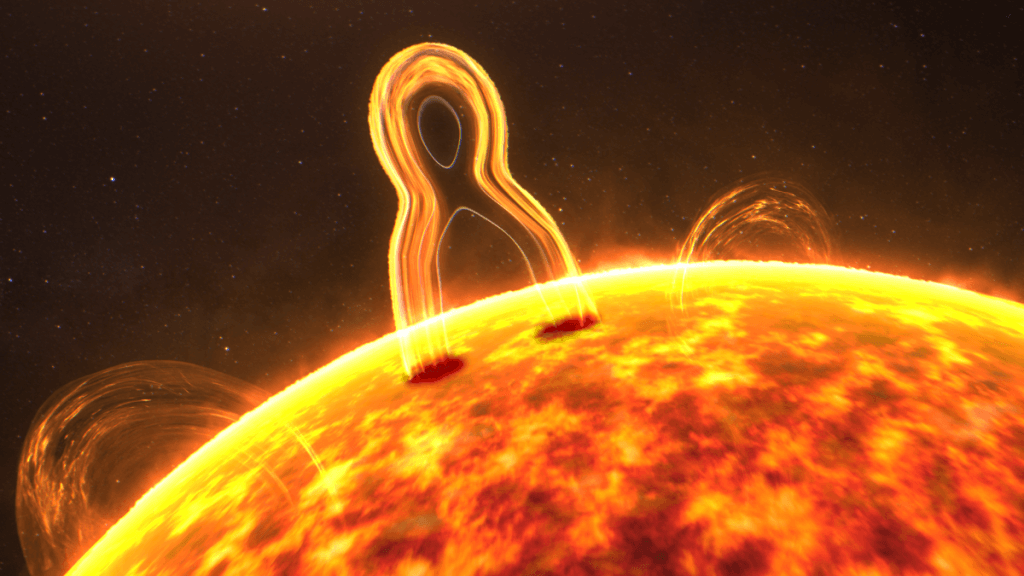
Solar flares explode with huge energy thanks to a simple magnetic phenomenon (Image Credit: Space.com)
The secret to what drives powerful solar flares is literally in the palm of your hand.
Astronomers have discovered that one of the most important magnetic effect at work on the sun is the same one that fastens your cell phone’s magnetic flip cover. But on the sun, the result is much more dramatic: Twisted magnetic fields carrying streams of hot charged plasma become entwined, then snap and rapidly reorganize. That so-called fast magnetic reconnection releases huge quantities of energy, and Earth is often subject to the accompanying flares, plasma bursts and geomagnetic storms.
But exactly why fast reconnection happens, and why it releases energy at a constant, predictable speed, has been a mystery for 60 years. Now, observations by NASA’s Magnetospheric Multiscale Mission (MMS), a quartet of small spacecraft flying around Earth in a pyramidal formation, may have helped uncover the answer.
Related: Why so much solar activity? Sun may be outpacing predictions.
The sun, which has a surface temperature of 5,778 kelvin (9,940 degrees Fahrenheit or 5,500 degrees Celsius) is so hot that gas there is ionized — that is, atoms are stripped of their electrons and the gas becomes a sea of electrically charged ions and free electrons, which we call a plasma. The plasma is sufficiently diffuse that the ions rarely come into contact with one another, so the plasma is said to be collision-less, and the ions and electrons inside it all move as a group, rather than on individual trajectories crashing into each other.
Solar physicists led by Yi Hsin Liu of Dartmouth College in New Hampshire have used the MMS data to finally show what happens during fast reconnection. During such an event, the ions and electrons become decoupled from each other and begin to move perpendicular to the sun’s magnetic field lines, creating an unstable energy vacuum through the interplay of electric and magnetic fields.
This is called the Hall effect, which is commonly used here on Earth in everything from magnetic locks and sensors to nuclear fusion experiments.

The energy vacuum does not last long: As the surrounding magnetic fields reorganize in just minutes, the vacuum becomes squeezed and implodes. The implosion converts magnetic energy into large amounts of heat and kinetic energy that gush out at a predictable, constant rate. It’s this energy that we see when a solar flare occurs and spews charged particles into space.
According to the researchers, the findings will have important ramifications for our understanding of magnetic reconnection events across the solar system.
“If we can understand how magnetic reconnection operates, then we can better predict events that can impact is at Earth, like geomagnetic storms and solar flares,” Barbara Giles, a project scientist for MMS from NASA’s Goddard Space Flight Center in Maryland, said in a statement. “And if we can understand how reconnection is initiated, it will also help energy research because researchers could better control magnetic fields in fusion devices.”
The findings are described in a paper published Thursday (April 28) in the Nature journal Communications Physics.
Follow Keith Cooper on Twitter @21stCenturySETI. Follow us on Twitter @Spacedotcom and on Facebook.





